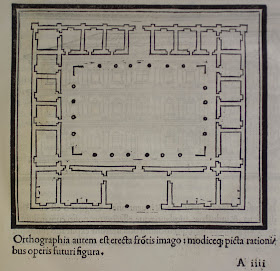 Marcus Vitruvius Pollio was a Roman of the first-century B.C. He served in several of Julius Caesar's campaigns, most likely as an engineer responsible for the construction and maintenance of the army encampment. Little else is known about his life save what is revealed in his only surviving work De architectura, a treatise on architecture which detailed then current Roman practices as well as methods and designs from Greece and earlier cultures. His philosophy on design is often summed up by his statement that a structure should incorporate elements that make it solid, useful and beautiful. Rediscovered in the 15th-century, De architectura had a profound effect on Renaissance design and served as inspiration for Da Vinci and others.
Marcus Vitruvius Pollio was a Roman of the first-century B.C. He served in several of Julius Caesar's campaigns, most likely as an engineer responsible for the construction and maintenance of the army encampment. Little else is known about his life save what is revealed in his only surviving work De architectura, a treatise on architecture which detailed then current Roman practices as well as methods and designs from Greece and earlier cultures. His philosophy on design is often summed up by his statement that a structure should incorporate elements that make it solid, useful and beautiful. Rediscovered in the 15th-century, De architectura had a profound effect on Renaissance design and served as inspiration for Da Vinci and others.De architecura is divided into ten books and is commonly known as the Ten Books on Architecture. Each book focuses on a related subset of design and construction methods or decorative motifs. These include sections on temples (book 2), water and aqueducts (book 8) and Roman engines - primarily military in nature (book 10).
Rauner holds several editions of De architectura, the earliest being the first illustrated edition published in Venice in 1511 which is notable not only for the illustrations but also for Fra Giovanni Giocondo's revisions and corrections to earlier published editions. Rauner's copy additionally features numerous notations in the margin. Other editions include the first (1521) and second (1526) Italian translations.
Ask for Red Room 871 V92 1511 to see the first illustrated edition. Other editions can be found by searching the catalog.

No comments:
Post a Comment